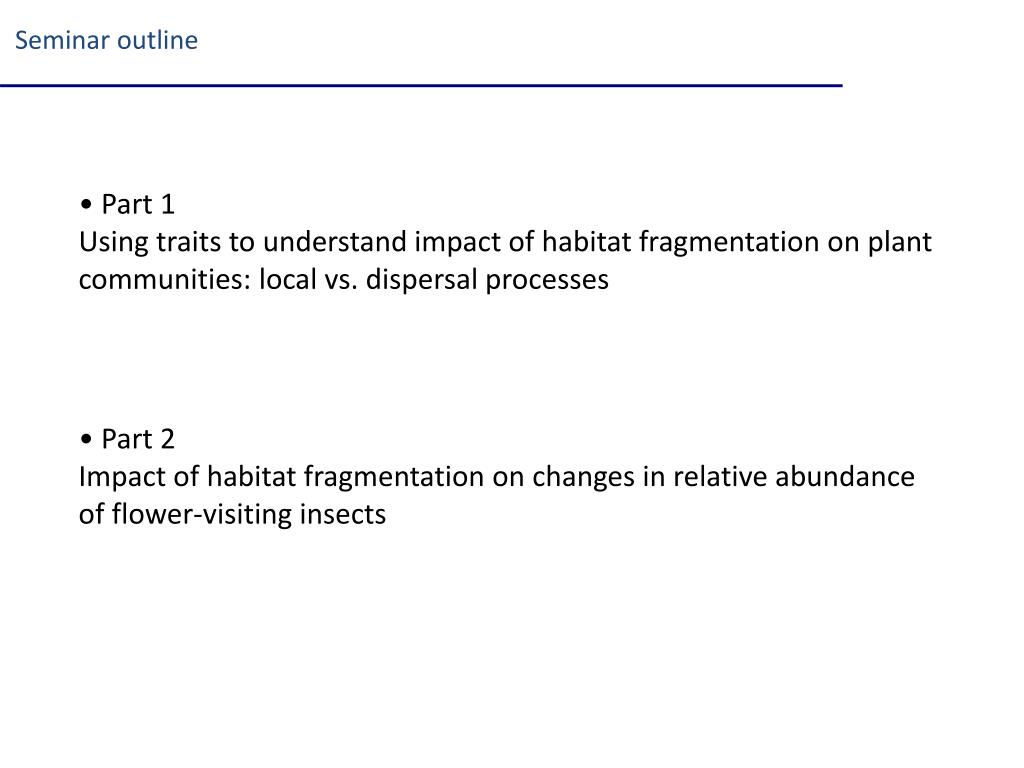The Biggest Dangers Of Habitat Fragmentation Biology Diagrams The negative effects of patch fragmentation on food chain dynamics are largely determined by patch loss, Fahrig, L. Effect of habitat fragmentation on the extinction threshold: a synthesis. Ecol.

The effect of habitat changes on food chain length: habitat deterioration (A and D), habitat loss (B and E), and habitat fragmentation (C and F). A-C illustrate the three types of habitat changes.

Diverse responses of species to landscape fragmentation in a simple ... Biology Diagrams
1. Introduction. Understanding the impact of habitat fragmentation (habitat loss, number of fragments and isolation) on biodiversity is crucial for ecology and conservation biology [1-3].A general observation and prediction is that large-bodied predators at high trophic levels which depend on sufficient food supplied by lower trophic levels are most sensitive to fragmentation, and thus The effect of habitat changes on food chain length: habitat deterioration (A and D), habitat loss (B and E), and habitat fragmentation (C and F). A-C illustrate the three types of habitat changes. In A and B, green and gray points represent the remaining and destroyed habitats, respectively.

Thus, habitat fragmentation can reduce food chain length by disrupting trophic interactions, thereby leading to cascading secondary extinctions in food webs The effect of habitat fragmentation on species occupancies is dependent on the degree of habitat loss. At extremely low levels of habitat loss, fragmentation has minimal effect on the

The biggest losers: habitat isolation deconstructs complex food webs ... Biology Diagrams
We here explore how the number of habitat patches, i.e. the number of fragments, and an increase of habitat isolation affect the species diversity patterns of complex food webs (α-, β-, γ-diversities). We specifically test whether there is a trophic dependency in the effect of these two factors on species diversity. The effects of fragmentation on species will also be very different if one study is investigating different aspects of fragmentation—e.g., one examining "number of patches" and the other "edge density"—despite the fact that the two variables are often used interchangeably to describe fragmentation. The effects of habitat degradation
The lack of space and resources for both predator and prey can lead to imbalanced food chains, further threatening biodiversity. Furthermore, species that rely on specific habitat types, such as certain birds or amphibians, may be particularly sensitive to fragmentation, as they may require large, uninterrupted areas of habitat for breeding
